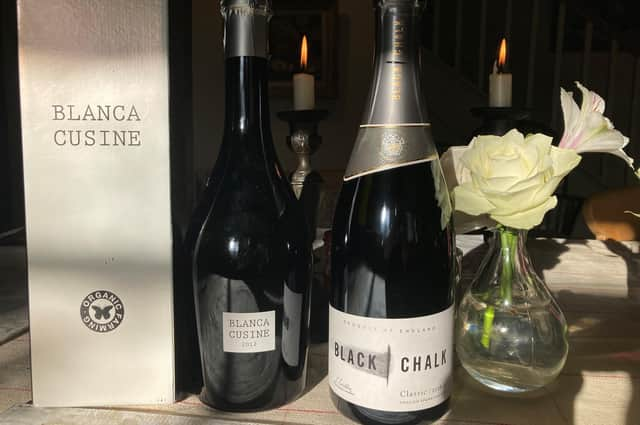Sparkling wine to set the party mood: Richard Esling, December 13


The lively effervescence of well-made sparkling wine lifts the spirits and sets the happy party mood. And nowadays there is a lot to choose from. The ‘traditional method’ of production, with secondary fermentation in individual bottles, is the method for making Champagne and all top-quality sparkling wines around the world.
All champagne is naturally made by this method (where it all started), all cava wines from Spain and all crémant wines from France, which can be particularly good value for money. I have yet to come across a crémant I didn’t like, the vast majority of which are under £15 per bottle.
Advertisement
Hide AdAdvertisement
Hide AdHere are two more unusual bottles of fizz, both made by the same method as Champagne – the traditional method – and both from regions now making top-class sparklers.
The first of these comes from a region which is very much ‘up-and-coming’ and already highly regarded on the world stage – England. The great majority of English sparkling is made by the traditional method and in terms of quality, many stand proudly alongside their peers from other parts of the world. The unusually named winery Black Chalk from Stockbridge in Hampshire, has just released the Classic 2018 II. Slightly confusingly, this is the first of two ‘expressions’ of their 2018 vintage, with the Classic 2018 I released next year. The two wines demonstrate different winemaking procedures and are from grapes sourced in different parts of Hampshire. All of which shows a certain degree of maturity of the English Sparkling Wine Industry.
The 2018 Classic II is sourced from completely different Hampshire vineyards to their 2018 counterparts and have been created in a softer more generous style than the main labels. In part this is thanks to 80 to 90 per cent Malolactic Fermentation conducted on the base wines, bringing already low acids to a soft and gentle level in the final wines. The blend is comprised of: chardonnay (58 per cent); pinot meunier (32 per cent) and pinot noir (10 per cent) and the wine has spent 24 months on lees. Available at £35 per bottle online. 2018 was a perfect year for growing wine grapes in England.
Black Chalk launched in 2018 making small batch wines from small Hampshire vineyards. Stylistically, purity of fruit is key, along with structure and a complex, balanced palate. The careful use of oak for a proportion of the wines and time on lees helps to develop this complexity.
Advertisement
Hide AdAdvertisement
Hide AdMy second wine is a top-quality Gran Reserva Cava from southern Spain. Parès Baltà Blanca Cusiné 2012 is a Brut Nature style, meaning that the ‘dosage’, which is the small amount of sugar added to most sparkling wines for balance, was zero. This results in a very dry wine, excellent for pairing with many dishes. The Blanca Cusiné is golden yellow in colour, a result of its longer ageing. It has intense aromas of dehydrated fruits, toasted notes and subtle touches of fruit compote. The Gran Reserva wines from Cava are aged for a minimum of 30 months, with many being aged for five years or more. Available from specialist retailers at around £32 per bottle.
The family owned Parès Baltà winery located near Barcelona has origins stretching back to 1790. Fully embracing sustainable culture, the vineyards have been certified organic since 2002 and biodynamic since 2012. The vineyard has its own flock of sheep to aid soil fertilisation and beehives to assist pollination, both helping maintain biodiversity.
Richard Esling is a wine consultant, agent, writer and educator. He runs agency and consultancy WineWyse, is founder and principal of Sussex Wine Academy and is chairman of Arundel Wine Society
Comment Guidelines
National World encourages reader discussion on our stories. User feedback, insights and back-and-forth exchanges add a rich layer of context to reporting. Please review our Community Guidelines before commenting.